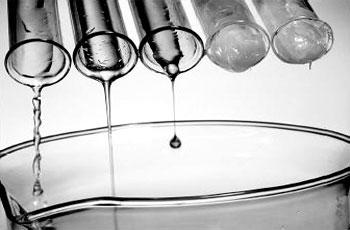 Viscosity in different liquids
Viscosity is a special property of liquids in which one layer of liquid drags the other layer preventing the smooth flow of liquid. This is resulted due to attractive forces between the molecules. High viscous fluids flow slowly and liquids with less viscosity move with less ease than former.
Viscosity in different liquids
Viscosity is a special property of liquids in which one layer of liquid drags the other layer preventing the smooth flow of liquid. This is resulted due to attractive forces between the molecules. High viscous fluids flow slowly and liquids with less viscosity move with less ease than former.
Viscosity is related to the ease with which individual molecules of the liquid can move with respect to one another. It thus depends on the attractive forces between two molecules and on whether structural features exist that cause the molecules to become entangled. Viscosity decreases with increasing temperature because at higher temperature the greater average kinetic energy of the molecules more easily overcomes the attractive forces between molecules.
Water has a higher viscosity than many other liquids because of its ability to form hydrogen bonds. Interestingly, the viscosity of glycerol is significantly higher than that of all the other liquids listed in the adjacent table.
Like water, glycerol can form hydrogen bonds. Each glycerol molecule has three –OH groups that can participate in hydrogen bonding with other glycerol molecules. Furthermore, because of their shape, the molecules have a great tendency to become entangled rather than to slip fast one another as the molecules of less viscous liquids do. These interactions contribute to its high viscosity.